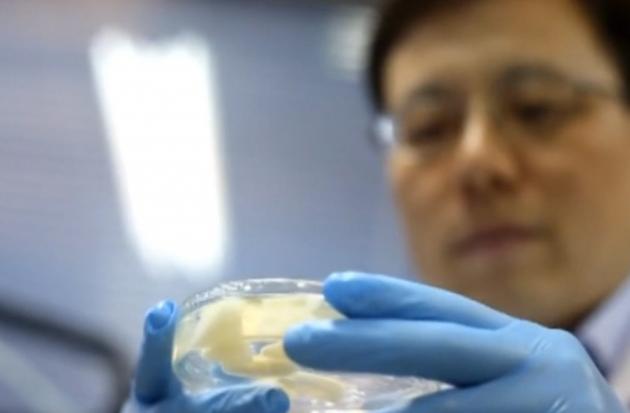
How to Manage a Distributed Remote Team Nov 23, 2024


How to Secure CRM Software and Ensure Data Privacy Sep 30, 2024



How NLP Can Transform Your Communication Skills Aug 27, 2024

Essential HVAC Maintenance for Rental Properties Aug 26, 2024

Maximizing Equipment Lifespan with CMMS Software Aug 08, 2024

Top Business Tools for Streamlining Your Operations Aug 01, 2024
Scientists 3D Print Living Human Kidneys (Video)
Aug 14, 2013 18:51

Scientists are successfully printing 3D living human kidneys. This is great news. Currently, they are miniature in size but with 90% of the printed cells being alive. This increases the potential for human use.
Scientists cultured samples of human kidney cells and blended them with hydrogel - a water and nutrition rich material that makes up the 3D printed kidney's base. The printed cells can survive for up to four months in a lab thanks to the gel's rich nutrient source.
The actual process is considerably different from plastic based 3D printing. Xu Mingen, lead researcher and professor at Huazhong University of Science and Technology in easter Zhejiang Province says:
It's different from traditional 3D printing—to print a cup, we have to fill up the object with our material. But this method doesn't work in cells because a cell contains blood vessels and has tissue space. We have to make sure to spare enough space for them to grow.
Even better is that the kidneys actually function the way real human bred counterparts. They break down toxins, metabolize and secrete fluid. It may still be a few years away before this can be a viable option for those looking for a new kidney, but aren't you glad it's already on it's way? Good job. [Digg]
Let’s be honest; OTT platforms have completely changed our movie-watching experience and made entertainment just a click away. A few years ago, who would have thought that watching regional or international movies could be this easy, convenient, and tailored to our budget and preferences? And, yet here we are enjoying the options of Marathi, Malayalam, Hindi, Gujarati, Tamil movies, and a lot more at our fingertips. Read more

Electronic Logging Devices (ELDs) have revolutionized the trucking industry by streamlining logging practices and ensuring compliance with federal regulations. Designed to monitor a vehicle’s engine and automatically record driving hours, ELDs replace traditional paper logs and provide an efficient solution for tracking Hours of Service (HOS). If you're looking to complement your fleet's technology, partnering with tools like a reliable truck dispatch service can further optimize operations and keep your business running smoothly. Read more

The HONOR Magic 7 Pro price in ksa makes it an appealing option for those looking for a high-end smartphone. This advanced device stands out with its sleek design and robust build quality. This blog delves into the details, examining what makes the HONOR Magic 7 Pro unique, from the materials used to its overall durability and user experience. If you’re considering purchasing a high-end smartphone that balances aesthetics and functionality, this review of the HONOR Magic 7 Pro’s design and build quality will provide you with all the information you need. Read more
TECH NEWS
Jan 11, 2025 14:55
Copyright © Fooyoh.com. All rights reserved. User Agreement | Privacy Policy | Contact us
| Advertising
| About us
| Careers


















































